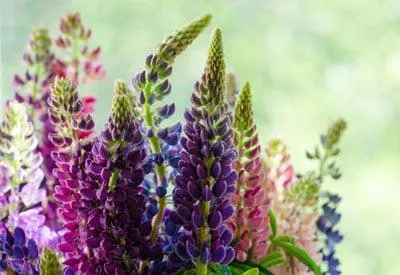Your Guide to Growing Houseplants
When searching for “house plant trees,” it’s clear you want to learn more about bringing the outdoors inside. From my experience as an avid houseplant gardener, I’ve discovered many benefits to surrounding yourself with green. In this article, I’ll cover the top tree-like houseplants, the best growing conditions, care tips, and more to help you find the perfect plants for your space.
Popular Tree-Like Houseplants
- Dracaena: With their tall, slender trunks and leaves that come in various shapes and colors, dracaenas are a great option if you want a tree-like appearance. The dramatic ‘Massangeana’ and colorful ‘Janet Craig’ varieties are great starters.
- Ficus: From the weeping fig to rubber plant, ficus trees bring lush texture. They thrive in medium light and release moisture into the air. My ‘Alii’ ficus has grown over 6 feet tall! Check yourself regularly for pests though – these plants are prone to infestations.
- Chinese Evergreen: With colorful, arched leaves and multi-stemmed habits, Chinese evergreens imitate small trees. I like the dark green and white variegated ‘Snowdrift’ – it’s kind of stunning! Give them bright, indirect light for beautiful foliage.
Pick the Right Growing Conditions
Basically, most tree-like houseplants will thrive in medium to low light. Sort of focus on light levels instead of the specific plant – if you put a low-light plant in super bright sun, it can get burned. For instance, despite what care tags say, my ficus gets stressed in direct sun.
When selecting a spot, consider windows that get morning sun but are shaded in the afternoon. Insufficient sunlight is kind of the number one reason indoor plants get sick. Make sure plants get indirect light for at least six hours daily as they would in nature. Brighten things up with a grow light if needed.
Care Tips That Really Work
Once you get your tree-like beauties planted up, follow a few simple care rules for healthy growth:

- Water when the top 1-2 inches of soil are dry. Stick your finger in to check! I always bottom-water my tall plants to prevent overwatering the crown.
- Mist foliage weekly to increase humidity around the plant. The rainforest-like atmosphere helps leaves thrive.
- Feed monthly in the growing season with a balanced houseplant fertilizer. I dilute mine to half the recommended strength just to be safe.
- Dust leaves occasionally and inspect regularly for pests. At the same time, quickly isolate any sick plants – bugs like to party!
- Repot in fresh soil every 1-2 years, or when roots fill the container. Repotting perks plants up like nothing else!
Pot size also matters. Go up only 1-2 inches at a time to avoid overpotting issues. Choose container styles that complement your decor too – you’d be amazed at how a simple change can totally transform a space.
Dealing with Problems and Pests
So you get your plant home and all seems well. But then maybe a few weeks later, problems start to arise. No worries – most issues can be fixed with some TLC.
For example, yellowing leaves are often due to overwatering. Just stick to a drier schedule going forward and clip off unsightly foliage. Spider mites are also super common on fussy plants. Isolate, spray with neem oil, and wipe down leaves to get rid of them ASAP.
Pests are a real headache, but usually avoidable with preventative sprays. Check new purchases thoroughly before bringing them inside too. Scale is insidious! At the same time, most plants can bounce back from illnesses if treated promptly. Better safe than sorry – be proactive.

Lifting Your Plant’s Spirits
Even when happy, plants benefit from an occasional pick-me-up. Rotate pots weekly so all sides receive light evenly. Give plants a shower under the patio faucet or in the sink too – they love “rain”! I also sometimes prune gangly growth for shape.
Repotting, fertilizing, and just admiring leaves releases feel-good hormones in plants. Talk or sing to your greenery too – some studies show plants respond positively to human interactions! In the winter, offering supplemental warmth and light lifts spirits when natural conditions are dreary.
Keep experimenting until you learn each plant’s preferences. From experience, even problem plants become low-maintenance beauties with tuned-in care. Hopefully these tips help you select and care for your new tree-like houseplants! Let me know if any other questions come up.
Houseplant Tree Care Guide
| Plant | Light Needs | Water Needs | ideal Temperature | Humidity | Notes |
|---|---|---|---|---|---|
| Dracaena | Medium | Allow soil to dry out between waterings | 65-80°F | Moderate | Tolerates low light, toxit to pets |
| Ficus | Bright indirect | Water when top inch of soil is dry | Above 65°F | Moderate | Slow growing, air purifying |
| Pothos | Low | Let dry slightly between waterings | Above 60°F | High | Vigorous vine, toxinous to pets |
| Philodendron | Medium | Water when top inch of soil is dry | 60-80°F | High | Numerous varieties, air purifying |
| Chinese Evergreen | Medium | Allow soil to partially dry | 55-80°F | High | Toxic to pets, colorful foliage |
FAQ
-
What kinds of trees can be grown as houseplants?
There are basically a handful of tree species that do alright indoors as houseplants. Some good options are dwarf olive trees, jade plants, money trees, and dwarf banana trees. I’ve even seen some folks keep little citrus trees in their home.

-
How much sunlight do houseplant trees need?
Most indoor tree plants need a fair amount of light. They won’t grow very well in low-light areas. Aim to put them in a spot with bright, indirect sunlight for at least 6 hours a day. You can also use a grow light if your home doesn’t get good natural light. Without enough sunshine, houseplant trees may grow slowly or get leggy.
-
What size pot should I use?
The pot you choose will depend on the current and expected size of the tree. Go with a container that’s only a few inches wider than the root ball. Repot into a slightly larger pot if the roots start to grow too big. It’s better for a tree to be a bit pot bound than in an oversized pot where soil stays soggy.
-
How often should I water indoor trees?
Water frequency will vary based on the tree type and growing conditions. Check the soil before watering – it should dry out somewhat between waterings. In general, water whenever the top inch of soil becomes dry. During the growing season, most houseplant trees need water every 5-10 days. Cut back watering in winter when the tree isn’t actively growing. Overwatering is basically the number one killer of indoor trees.
-
Are houseplant trees difficult to care for?
With the right growing conditions, most indoor tree plants are not too hard to look after. They don’t demand much more than adequate light, moderate watering, and occasional fertilizing. However, trees can get rather large, so you need to make sure they’ll fit in your living space in the long run. It also takes trees forever to outgrow mistakes. Overall though, indoor trees are definitely possible for beginners to keep if you put in a little effort.

-
What are some common problems with houseplant trees?
Besides underwatering or overwatering, two other frequent issues that might plague your indoor tree are lack of humidity and pests. Trees love environments with above 50% humidity, so consider a Pebble tray or humidifier. Mealybugs, scale, and spider mites sometimes invade houseplant trees, so keep watch and treat any infestations right away. Overall though, most small issues can be sorted out with some trimming, sprucing, or tender care.
-
Are certain tree species off limits indoors?
While there are tree species that do tolerate indoor conditions easier than others, it’s hard to say any trees are completely off limits. However, many large or fast-growing trees may outgrow your space more rapidly than expected. Trees adapted for tropical or dry climates also kinda struggle indoors. Basically, research the specific needs of prospective trees to ensure they’re a good fit for your indoor environment long-term.
-
Should I prune my indoor tree?
Light pruning can help keep trees bushy and shaped. It’s a good idea to trim away any dead or diseased growth. Removing some buds also encourages branching. However, be careful not to prune too much at once. Cut back no more than 25% of the tree’s total foliage per pruning session. Like people say, less is more when it comes pruning houseplants! Overall, just scale back trees when they outgrow their space.
